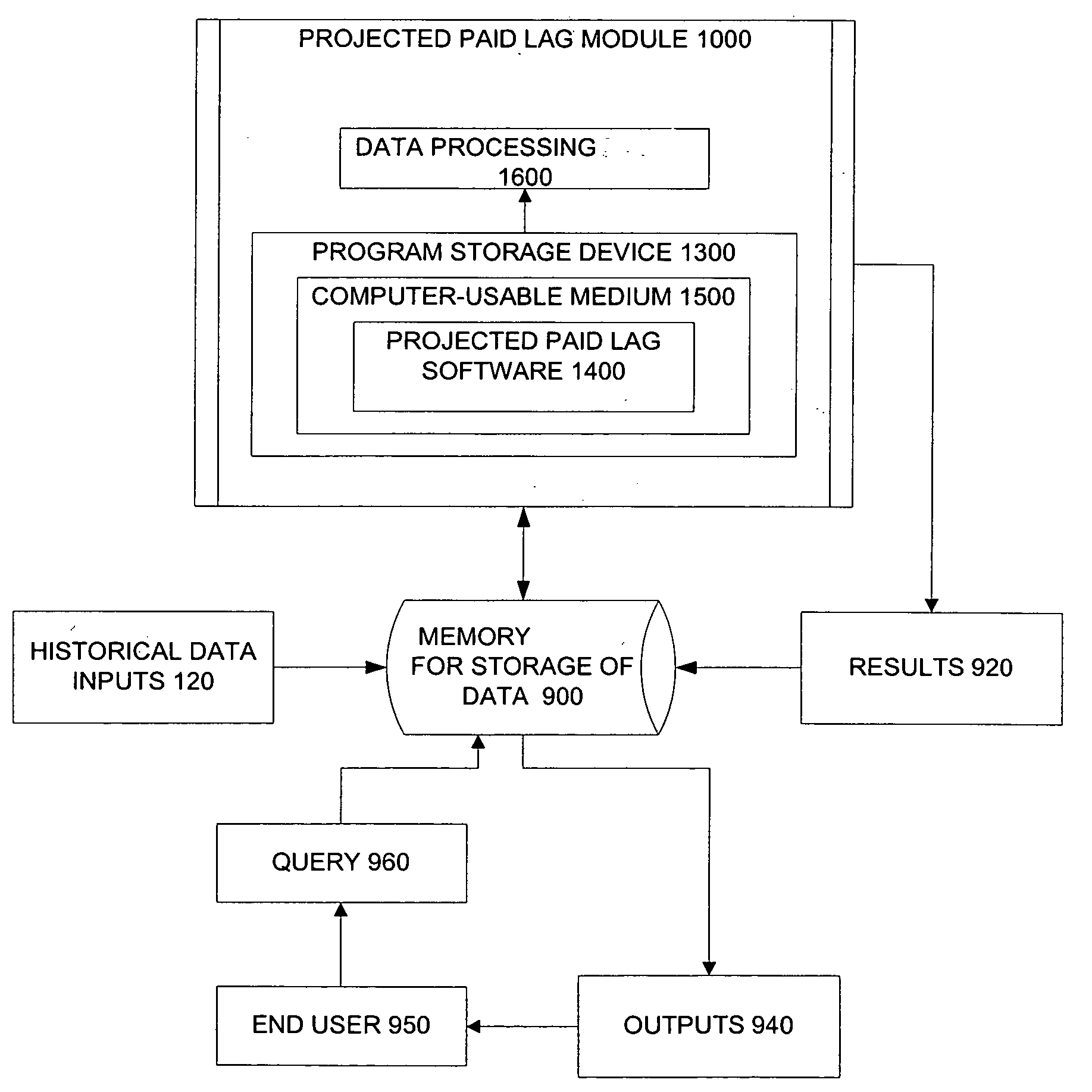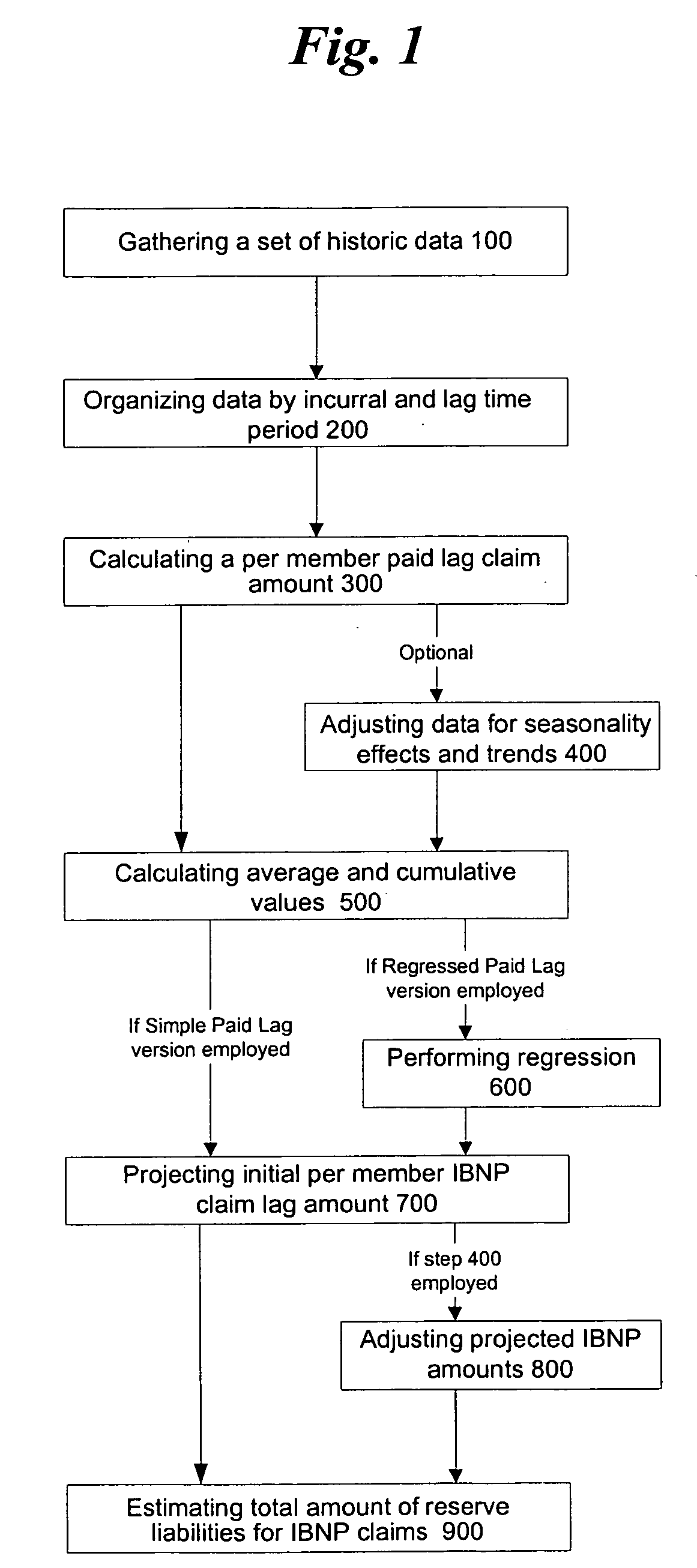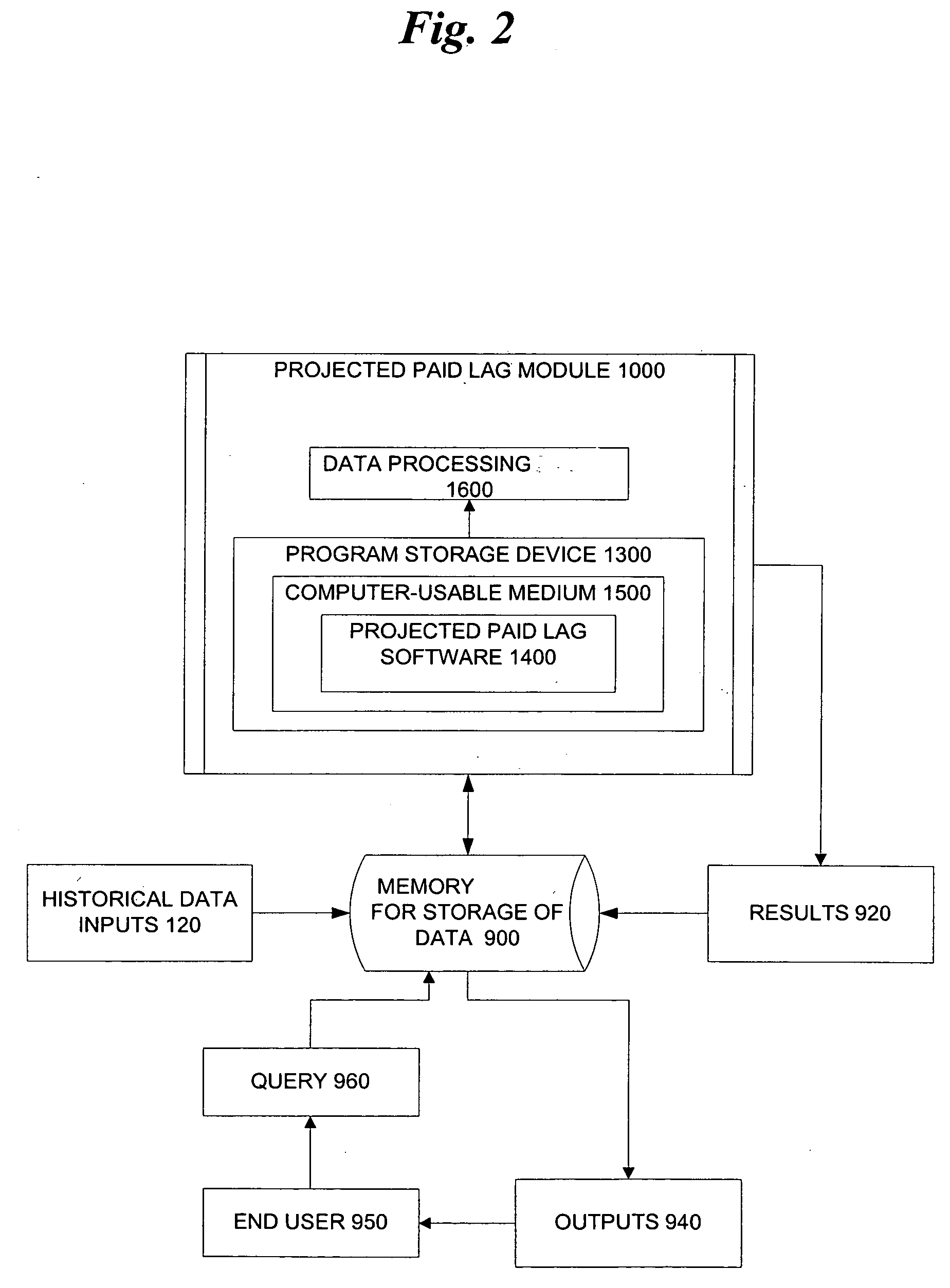Method for calculating IBNP health reserves with low variance
a health reserve and variance technology, applied in the field of low variance method for calculating ibnp health reserves, can solve the problems of under-reporting profitability, substantial penalties and interest assessment, and company to appear less profitable than it actually is, so as to reduce capital expenditures, accurately assess profitability and tax liabilities, and minimize liability reserve errors
- Summary
- Abstract
- Description
- Claims
- Application Information
AI Technical Summary
Benefits of technology
Problems solved by technology
Method used
Image
Examples
Embodiment Construction
)
[0048] Referring now specifically to the figures, in which identical or similar parts are designated by the same reference numerals throughout, a detailed description of the present invention is given. It should be understood that the following detailed description relates to the best presently known embodiment of the invention. However, the present invention can assume numerous other embodiments, as will become apparent to those skilled in the art, without departing from the appended claims. For example, the present invention may be applied to other areas of insurance.
[0049] It should also be understood that, while the methods disclosed herein may be described and shown with reference to particular steps performed in a particular order, these steps may be combined, sub-divided, or re-ordered to form an equivalent method without departing from the teachings of the present invention. Accordingly, unless specifically indicated herein, the order and grouping of the steps is not a lim...
PUM
 Login to View More
Login to View More Abstract
Description
Claims
Application Information
 Login to View More
Login to View More - R&D
- Intellectual Property
- Life Sciences
- Materials
- Tech Scout
- Unparalleled Data Quality
- Higher Quality Content
- 60% Fewer Hallucinations
Browse by: Latest US Patents, China's latest patents, Technical Efficacy Thesaurus, Application Domain, Technology Topic, Popular Technical Reports.
© 2025 PatSnap. All rights reserved.Legal|Privacy policy|Modern Slavery Act Transparency Statement|Sitemap|About US| Contact US: help@patsnap.com



